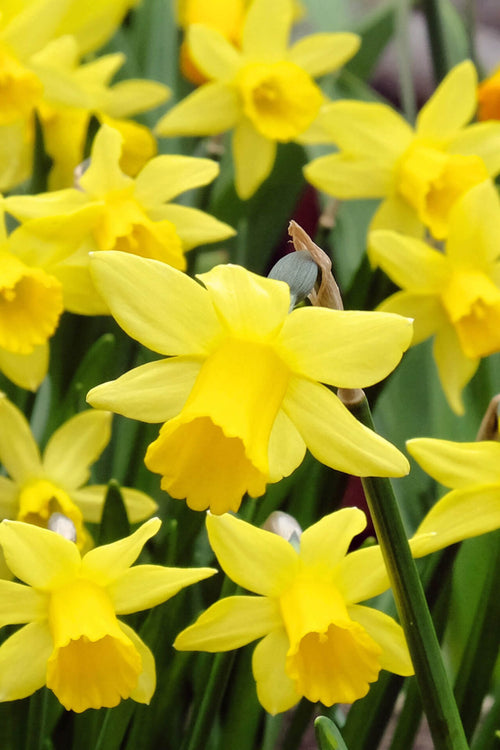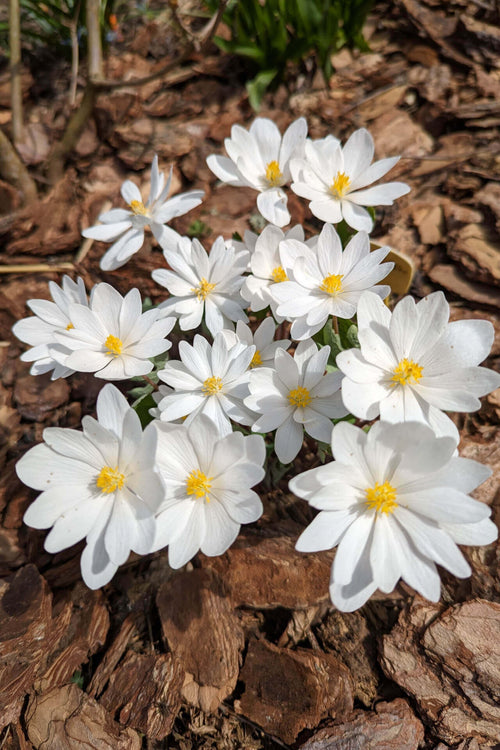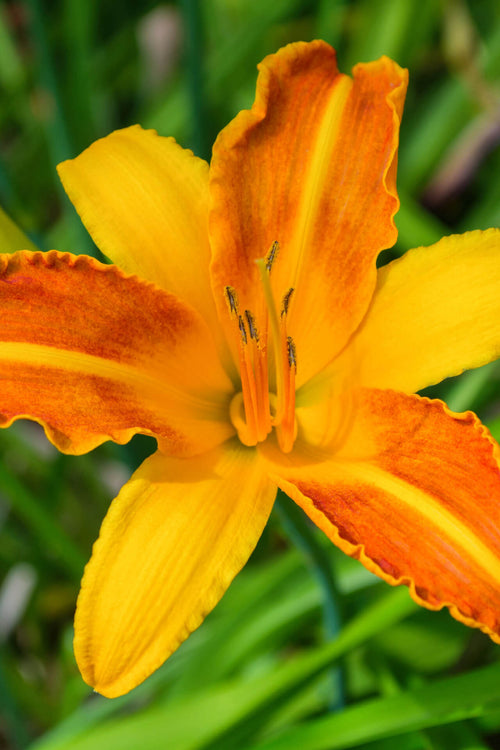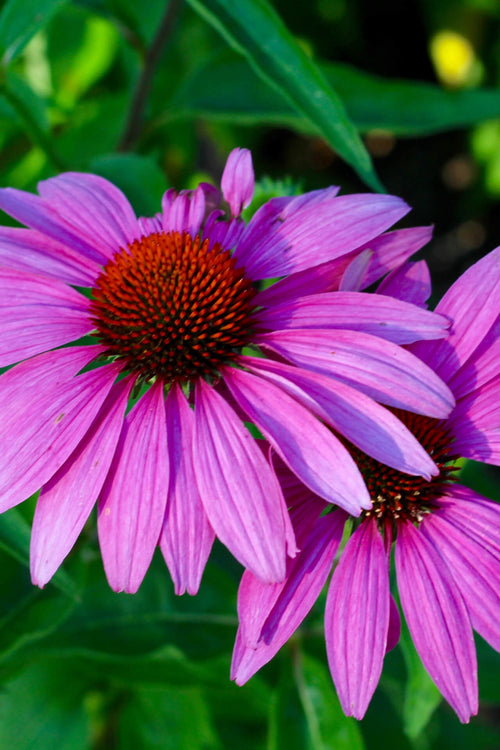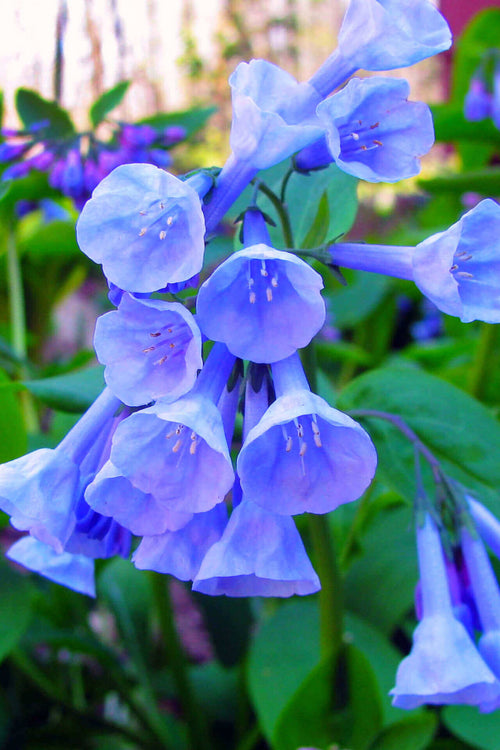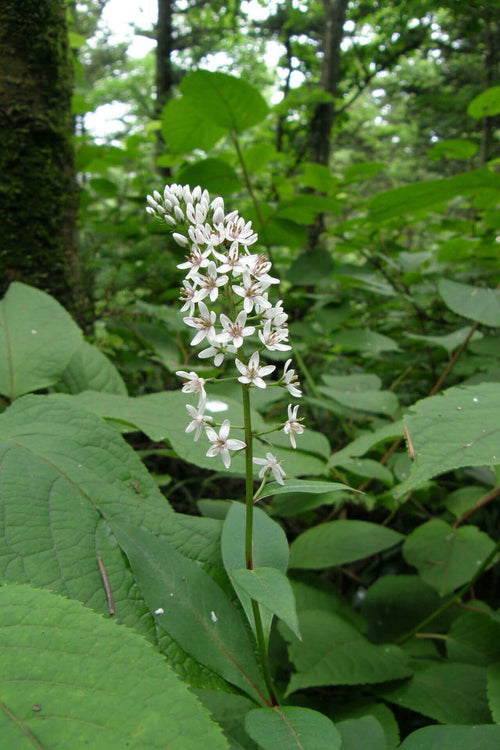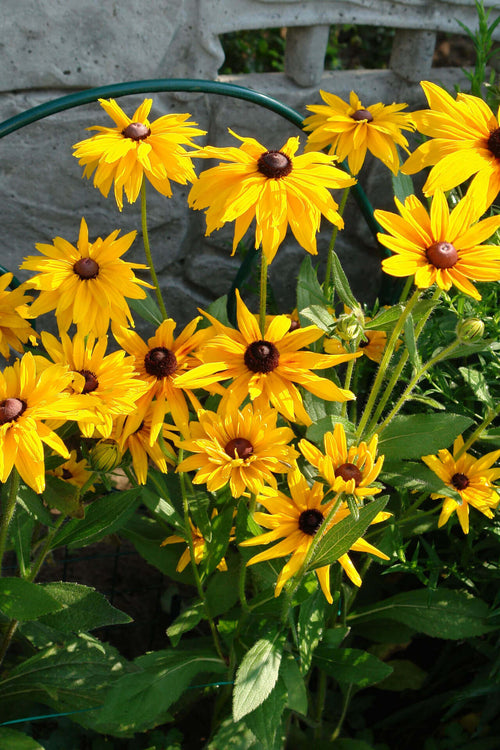Looking for Early Spring Blooming Perennials?
As cold weather is soon a thing of the past, homeowner’s are yearning for spring's vibrant hues and fragrant blooms. While some wait patiently for summer's grand floral display, others relish the quiet charm of early bloomers – brave perennials that symbolize resilience and hope.
Buy Early Spring Blooming Perennials Here
Tammy Sons at TN Nursery, a leading horticultural expert tells us about the seven best perennials for early Spring blooms. "If you don’t want to wait till Summer, try planting some of the below hardy perennials for super early Spring blooms!"
7 Spring Blooming Perennials That Will Make Your Heart Skip a Beat With Their Beauty
Daffodils:

The Sunshine Soldiers Daffodils are like a sea of sunshine swaying gently in the breeze. A bright yellow daffodil is usually a welcome sign of spring. These cheerful trumpet-shaped blooms, available in stunning colours and sizes, herald spring in all its glory. You can think of them as the enthusiastic cheerleaders of the garden. This particular plant is not only easy to grow, but it also returns every year.
Planting: Planting daffodils is like burying little treasures for spring. Imagine them as sturdy bulbs, akin to tiny time capsules packed with floral potential. In autumn, when the summer's heat has faded, choose a sun area with well-drained soil. Dig holes roughly 6 inches deep, spacing the bulbs about 6 inches apart. Gently nestle them in, cover them with soil, and let nature take its course. Come spring, these buried treasures will erupt in a joyous display of colour, reminding you that light always returns even after winter's darkness.
Bloodroot:
![Sanguinaria canadensis - Bloodroot - [Summer B&B Pre-Order] - Papaveraceae (The Poppy Family)](https://phoenix-perennials.s3.amazonaws.com/images/plants_large/2700.jpg)
The Underworld's Jewel In contrast to other, spring blooms, Bloodroot emerges from the forest floor with its white, poppy-like flowers. This ephemeral beauty thrives in moist, shady areas, adding a touch of intrigue to your garden as if it were a hidden treasure bursting from the earth's embrace.
Planting: Divide and transplant in early spring, moistening the soil around the rhizomes. Water regularly during its short growing season, but let it fade after flowering. It contains toxins and can irritate the skin, so be mindful.
Orange Daylily:
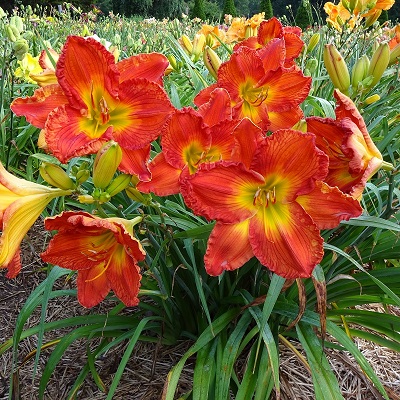
A Burst of Sunshine Throughout the Season Orange daylilies come in various vibrant colours, from fiery orange to apricot blush. These low-maintenance beauties bloom continuously throughout the summer, offering waves of colour well beyond their namesake "day." Imagine them as the marathon runners of the floral world, providing endless cheerful miles of colour.
Planting: Daylilies are adaptable, like friendly garden guests who happily adjust to various soil types. But just like humans who thrive on sunshine, they prefer well-drained, slightly acidic soil. Ensure they have enough space to spread their vibrant beauty in a sunny spot. As miniature suns, they need plenty of space to shine brightly.
Coneflower:
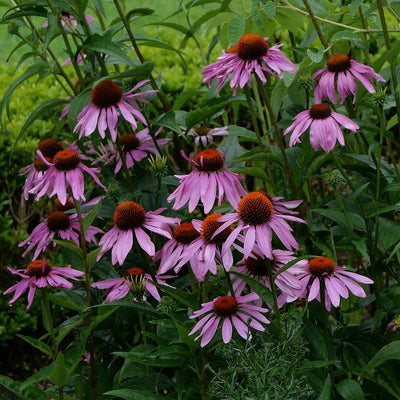
A Beacon for Butterflies and Bees Coneflowers are champions of attracting pollinators. Their daisy-like blooms, adorned with spiky cones in shades of purple, pink, and orange, offer nectar to butterflies, bees, and hummingbirds. These beneficial creatures are guided to delicious feasts by these small eco-friendly lighthouses.
Planting: Coneflowers thrive in full sun, like sunbathers soaking up the rays. They're also drought-tolerant once established, similar to resilient desert plants. Building a sturdy foundation for their colourful display begins with planting them in well-drained soil. By deadheading spent blooms, you encourage them to keep the party going, so don't hesitate to snip and enjoy their beauty for as long as possible.
Virginia Bluebells:
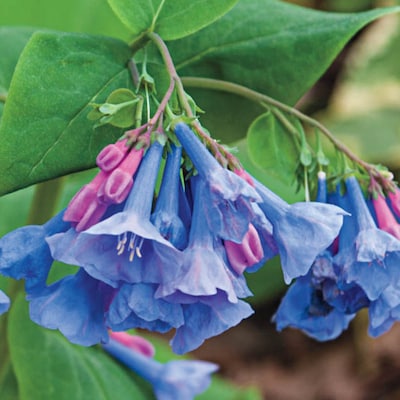
Imagine a woodland scene carpeted in ethereal bluebells. These delicate, bell-shaped flowers, native to North America, create a breathtaking display in late spring. Think of them as tiny ballerinas in blue tutus, gracefully dancing on a stage of green leaves.
Planting: Virginia bluebells prefer moist, humus-rich soil, like luxurious spa treatments for their delicate roots. Part shade to full shade is ideal, like seeking dappled sunlight filtering through leafy branches. They spread slowly through rhizomes, forming charming colonies over time. Remember their delicate nature when planting and weeding, like protecting precious treasures.
Foam Flower:
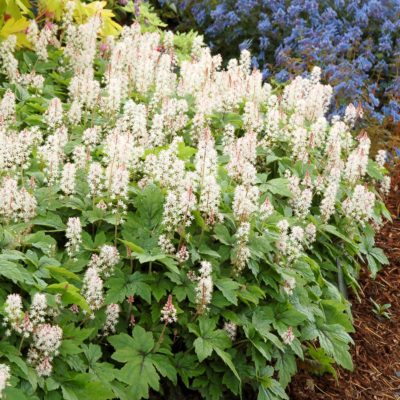
The foam flower, or Tiarella, offers a unique combination of texture and bloom. Its heart-shaped leaves form a lush carpet, while delicate white flower clusters resemble airy foam rising gracefully above. Think of them as miniature white fluff waterfalls, adding a whimsy touch to your garden.
Planting: Foam flower, like ferns enjoying a shady forest floor, prefers moist, well-drained soil in part shade to full shade. As they spread through rhizomes, they form charming clumps. These miniature colonies of frothy beauty are ideal for shady corners or near walkways for close-up viewing.
Black-Eyed Susan:

A cheerful perennial blooming in the the warm season. Black-eyed Susan, with its bright yellow petals and dark brown centre, adds a touch of rustic charm to the late summer garden. These cheerful daisies attract butterflies and bees, creating a vibrant ecosystem in your outdoor space. Think of them as friendly sunflowers with a unique twinkle in their eye, spreading joy and life.
Planting: Black-eyed Susan thrives in full sun and well-drained soil. It tolerates drought once established and is relatively low-maintenance. Deadheading spent blooms encourage further flowering, so keep snipping to prolong the show. Final Remarks: Adding native plants like blooming perennials to your garden can be an excellent to enhance its beauty and create a peaceful, soothing atmosphere. Native perennials are low maintenance, reproduces, lives for decades and are by far the easiest of all plants to grow and thrive wherever you plant them.
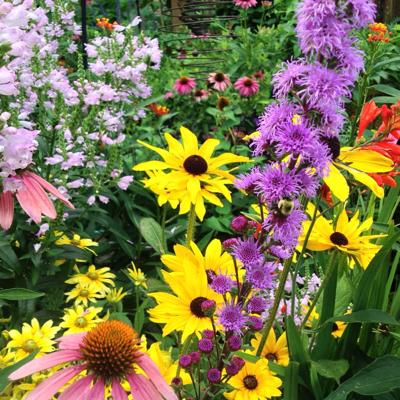
You can choose the perfect flower depending on your unique space and design preference. There are many attractive options, from the stunning blooms of the Clematis to the sweet fragrance of the Foam Flower. Transform your garden into a vibrant, tranquil oasis with a touch of colour on a trellis or lush green walls. By exploring these seven beautiful options, find the perfect Perennials for your outdoor space. Perennials that will transform your space into a haven of early spring beauty.

